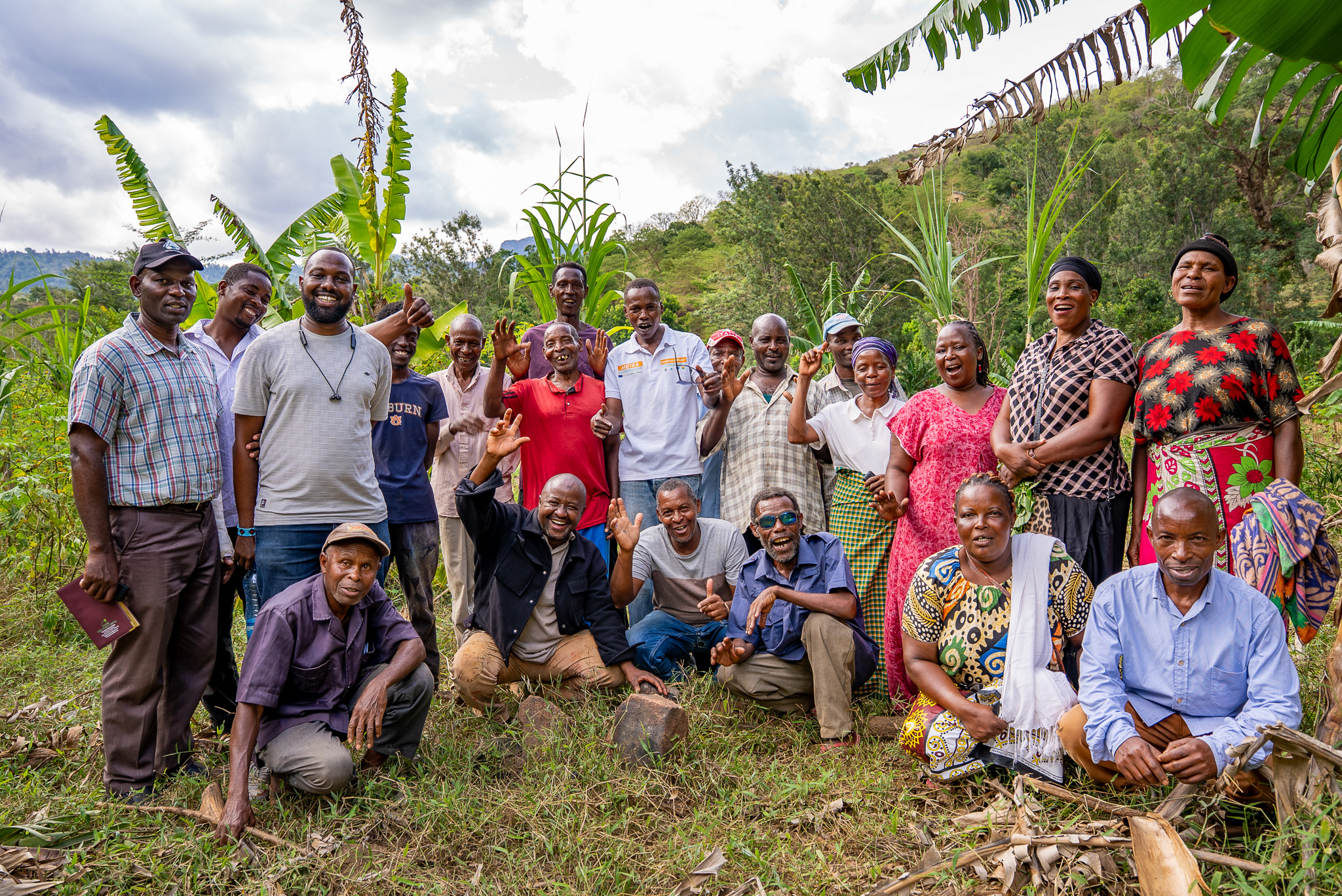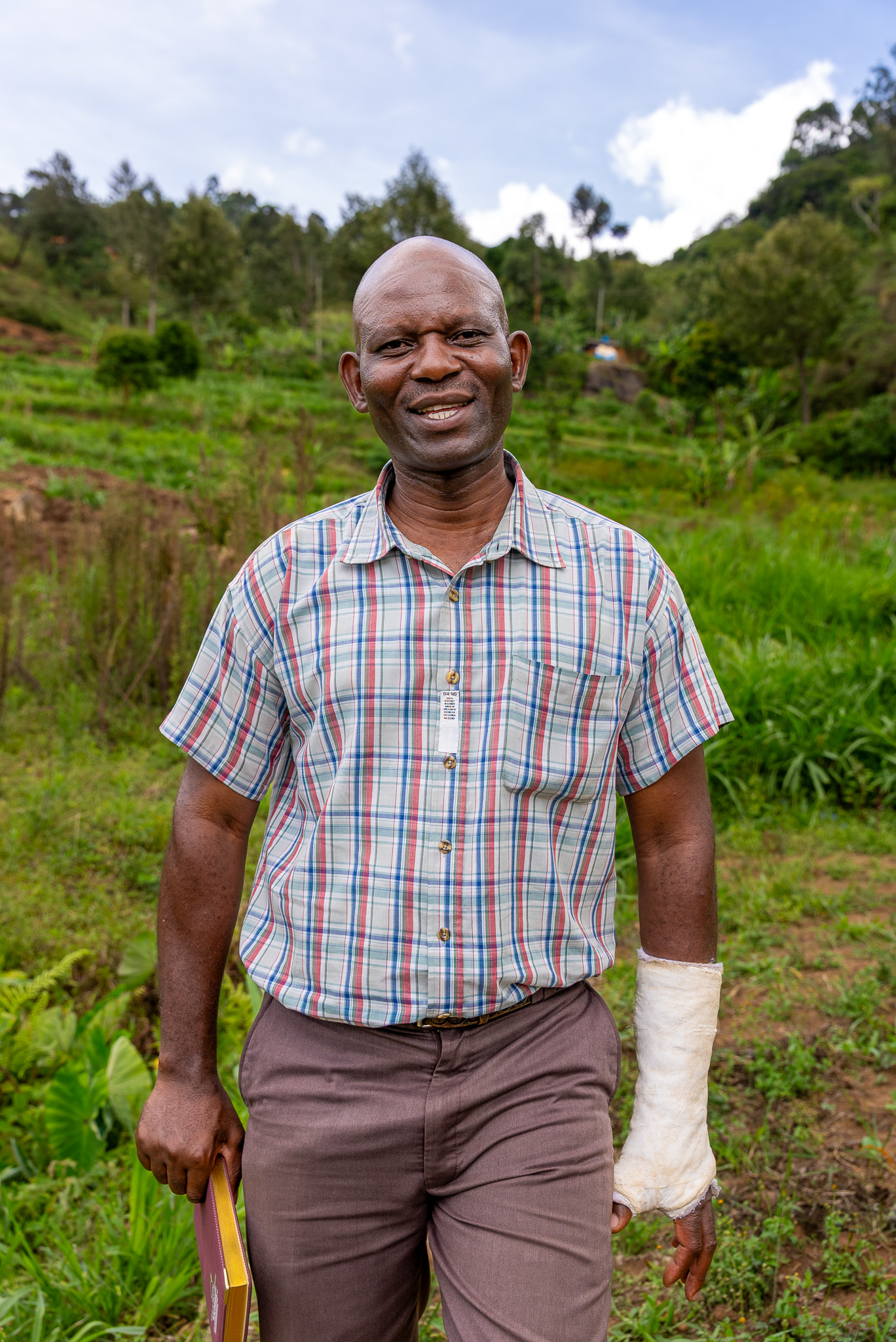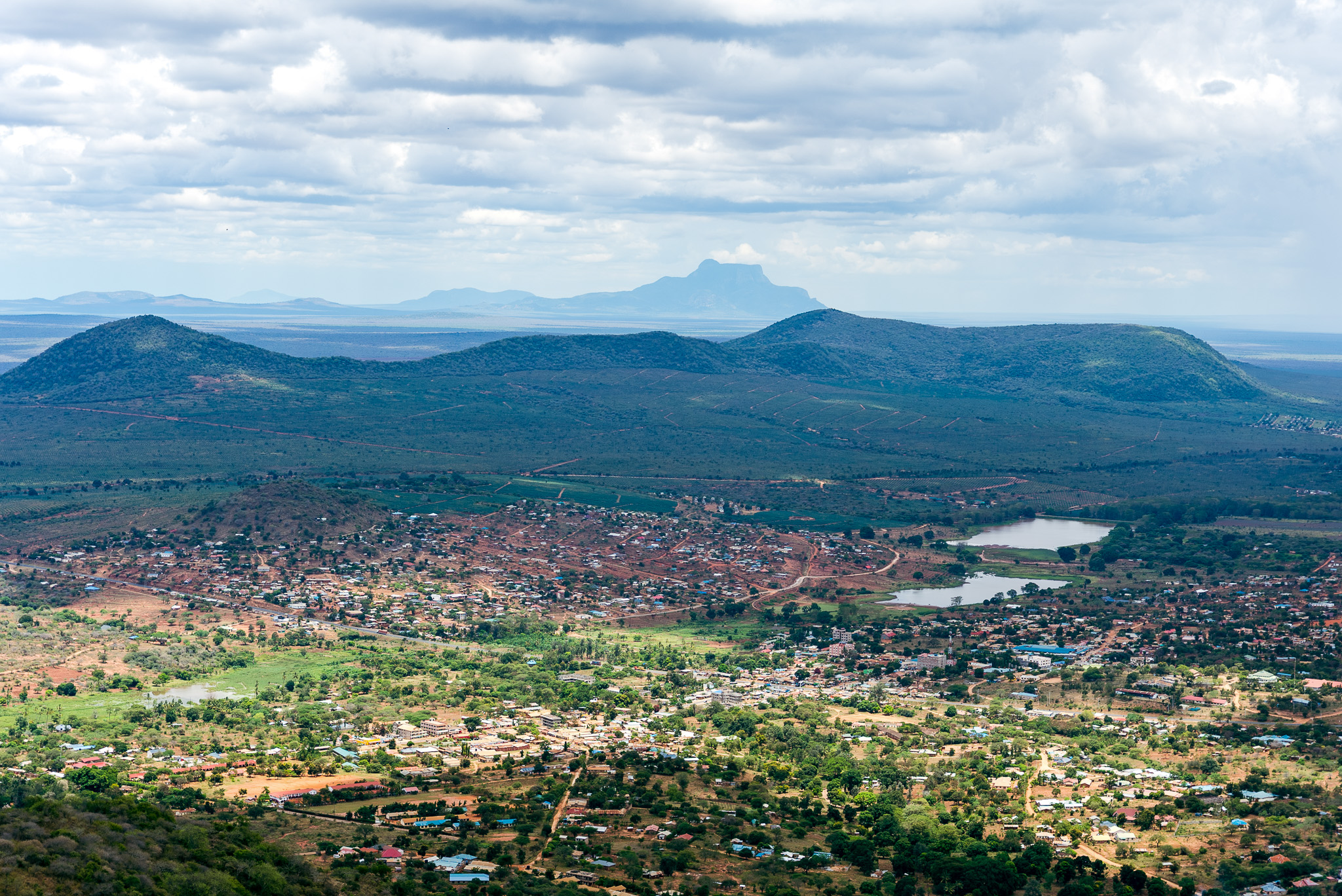Restoring Bura River: A Local Chief’s Fight Against Climate Change in Tsavo Landscape, Kenya

Chief Simon Mwakio (far left) with community members engaged in restoration efforts across Bura
In the heart of Kenya’s Tsavo Conservation Area, Simon Mwakio Mwangemi stands out as a passionate conservationist deeply connected to his community and the land that has sustained generations.

Chief Simon Mwakio in Bura location, Taita Taveta County, where community- led conservation is helping revive the Bura River and strengthen climate resilience.
For more than 40 years, Mwakio has lived in Bura Location, Taita Taveta County—an area defined by the lush Vuria Forest, a critical catchment feeding the Bura River. This river serves as a lifeline for downstream communities and wildlife sanctuaries, including Taita Hills Sanctuary and Lumo Conservancies.
But over the years, Simon watched the region shift from fertile, food-secure lands to an area scarred by climate change, deforestation, declining rainfall, and drying rivers. Severe droughts in 2008–2010 and again in 2020–2023 brought widespread food insecurity, wildlife and livestock deaths, and increased human–wildlife conflict as animals searched for water. Unsustainable human activities such as slash-and-burn agriculture, timber harvesting, and charcoal production burning further accelerated degradation.
Motivated by a deep sense of responsibility to his community and ancestral land, Simon decided to act. His goal: restore Vuria Forest and revive the Bura River, which had shifted from a permanent to a seasonal flow. He understood clearly that every action upstream affects far-reaching areas downstream.
In 2009, he began strengthening his relationship with the community by serving as Assistant Chief, a role he held until 2016. During this period, he supported the establishment of the Bura Environmental Group, which drove restoration efforts through tree planting, erosion control, and riverbank rehabilitation. The group, working with nine tree nursery groups, became a grassroots force for change.
When Simon was appointed Area Chief in 2017, he continued championing conservation, promoting agroforestry and riverbank restoration, while also serving as the Bura Environmental Focal Point. His leadership helped shift the community’s mindset, reminding residents that they were custodians of the landscape.
Recognizing the urgent need to strengthen climate resilience in Bura, the African Wildlife Foundation (AWF), with support from the Swedish International Development Cooperation Agency (SIDA), launched a program in 2023 to promote sustainable land management for the benefit of people and wildlife. Working with the County Government of Taita Taveta, Water Resources Authority (WRA), Kenya Forest Service (KFS), and the local community, AWF implemented practical, community-driven solutions.
AWF revived essential governance structures by providing capacity building to both the Lower Bura Water Resource Users Association (WRUA) and the Vuria Community Forest Association (CFA), empowering them to lead restoration efforts. To reduce pressure on Vuria Forest, households received biogas units and solar lamps, significantly decreasing dependence on firewood while improving lighting for students living far from the power grid.
To address chronic water scarcity, AWF desilted a water pan in Lumo Conservancy to provide reliable water for wildlife and livestock, reducing conflict during dry seasons. Earlier contributions from the TUI Care Foundation also enabled the construction of two boreholes in Bura, providing water for downstream communities and sustaining wildlife in nearby sanctuaries. Farmers were supported to adopt drip irrigation instead of furrow irrigation to reduce drought impacts.

A desilted water pan in Lumo Conservancy, serving as a vital water access point for wildlife and livestock
In addition, farmers within the WRUA received support for agroforestry and soil conservation—particularly fruit tree planting along riverbanks. This approach blends conservation with income generation by stabilizing soil while offering families long-term economic benefits.
Chief Mwakio notes that families now have improved access to water for domestic use and farming. More residents are participating in tree planting, including those who previously felt disconnected from environmental work. Wildlife is returning to key water sources, a promising sign that restoration is taking root. “These developments show how collective action can secure the long-term future of our community and the landscape—though there is still more to be done,” he says.
Through Chief Mwakio’s leadership, the community has learned that recovery is possible: forest cover is slowly returning, the river is being restored, and wildlife is thriving again. “Climate change is real,” he says, “but together we can heal our land.” His work demonstrates that resilience grows when communities unite in action.

An aerial view of Bura Location, Taita Taveta County
As COP30 continues to unfold this week, AWF is calling for global recognition of biodiversity as a central solution to climate change. We are also encouraging the negotiators to advocate for climate finance to reach the ground—directly supporting community-led champions like Simon whose efforts safeguard ecosystems, strengthen resilience, and secure a sustainable future for Africa.